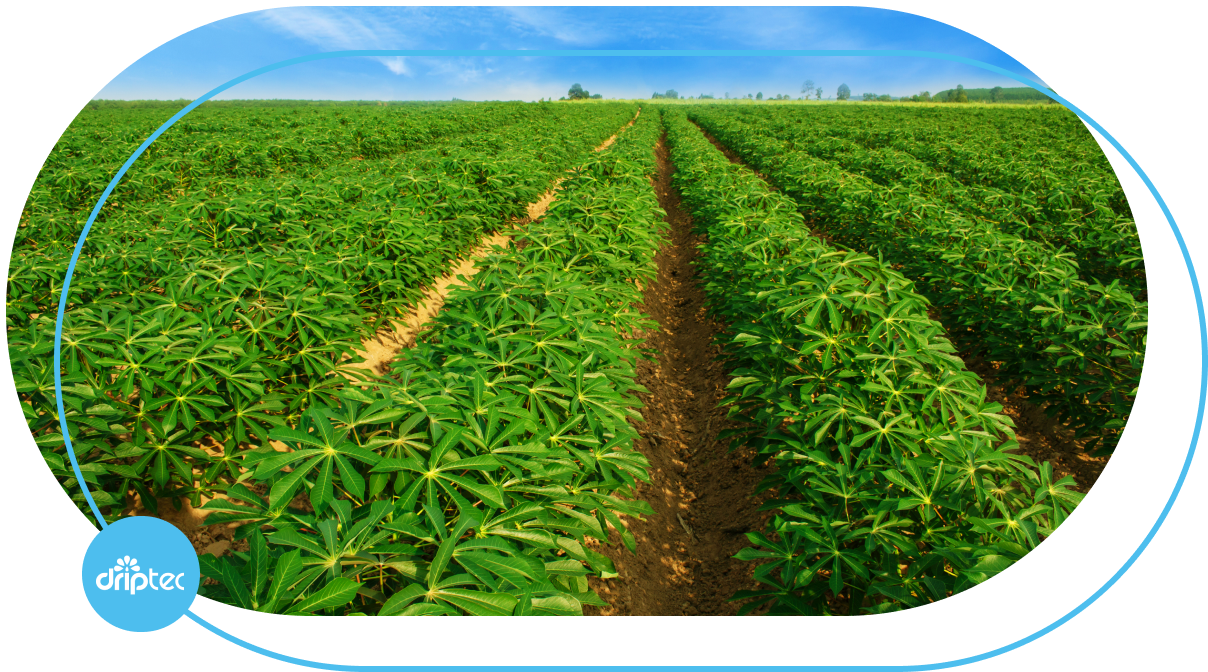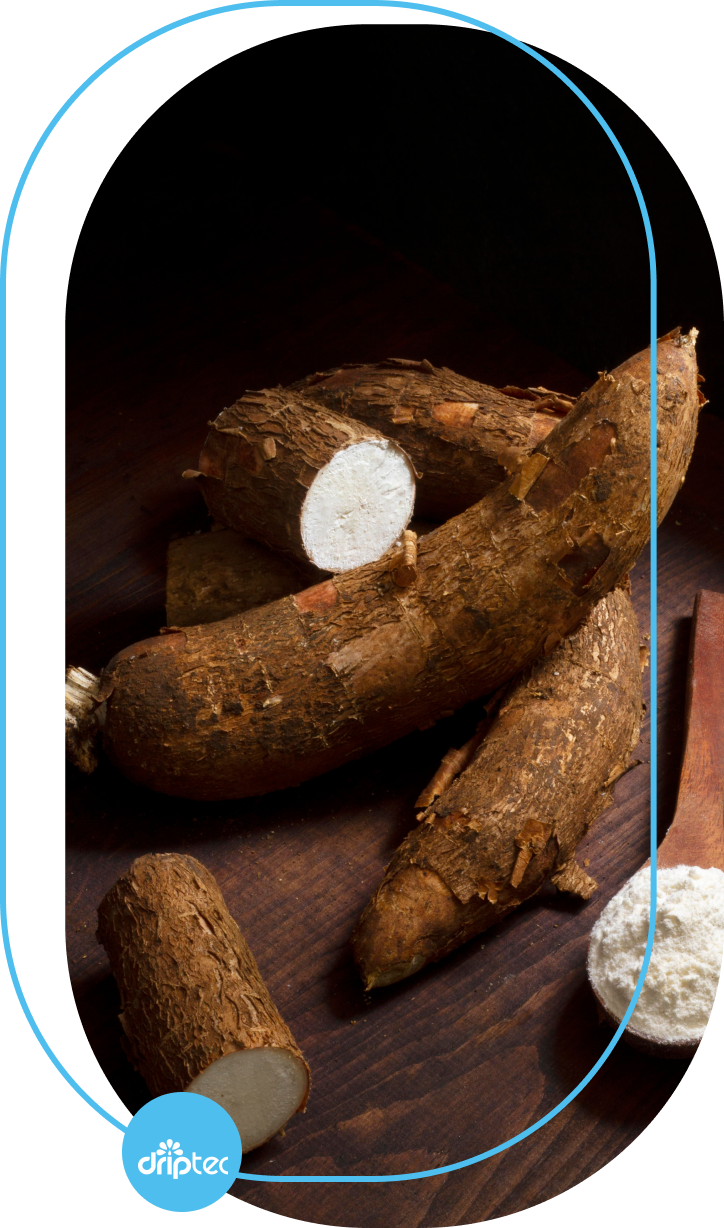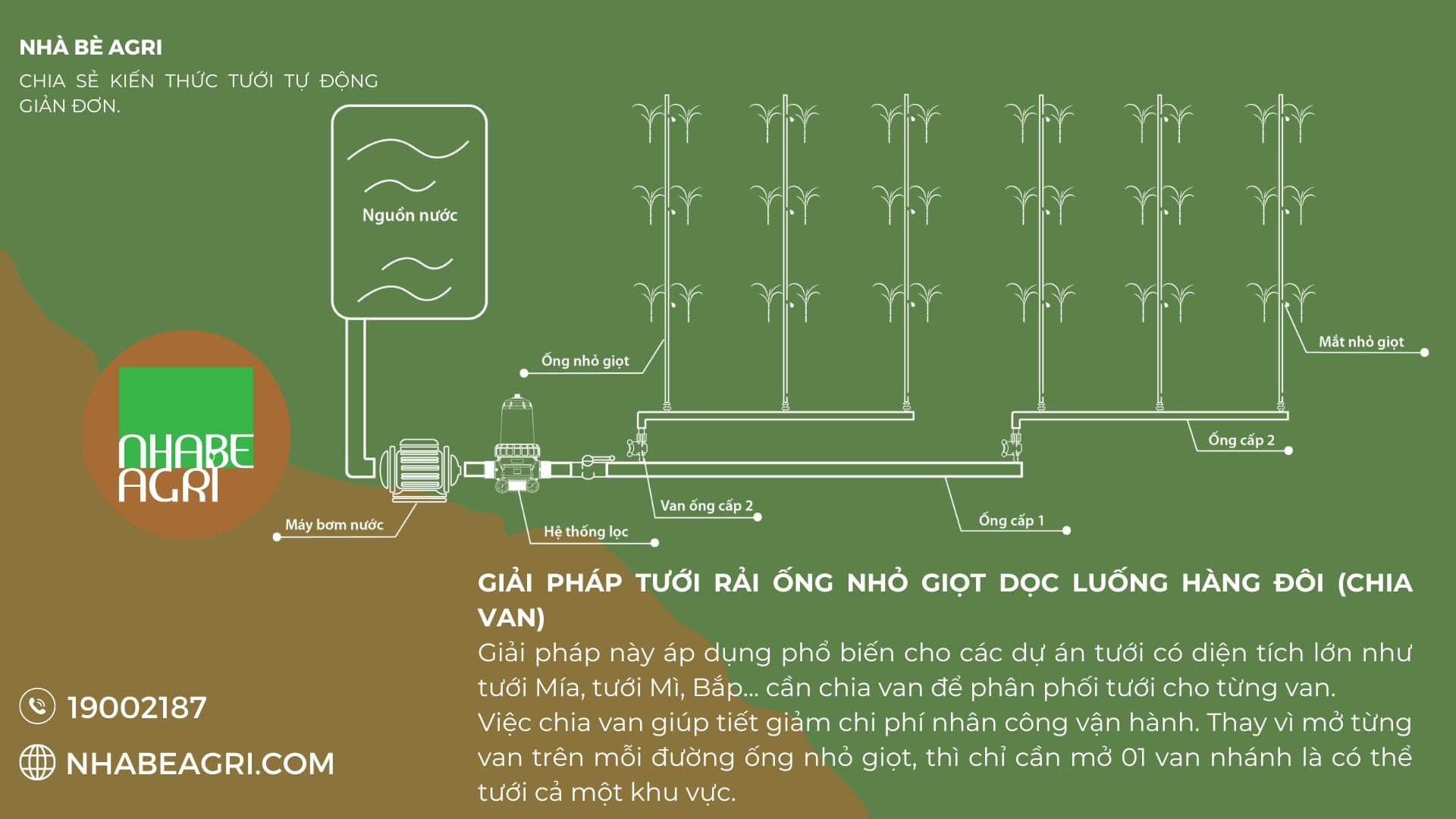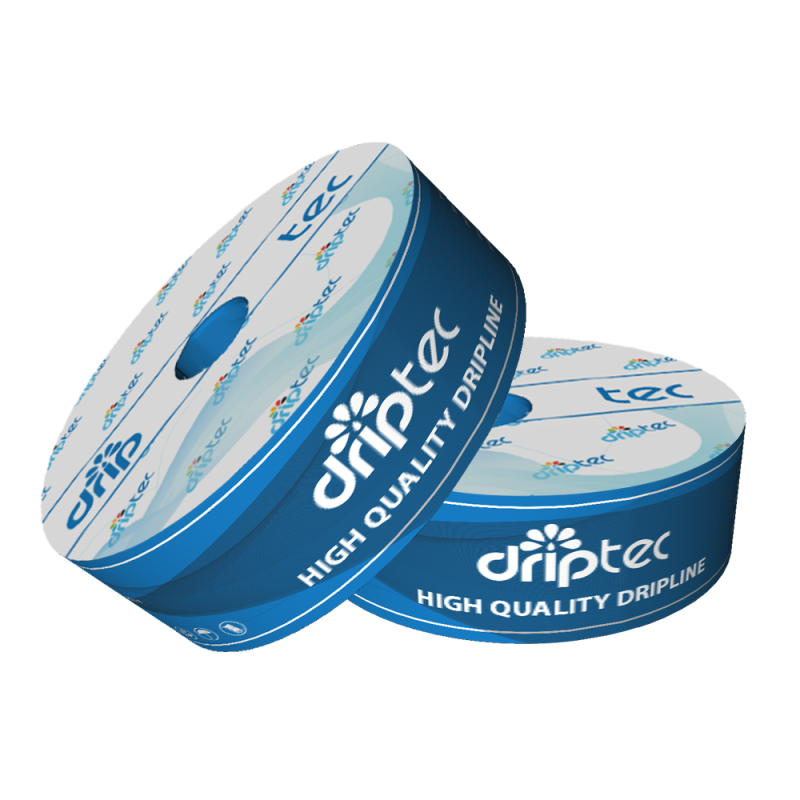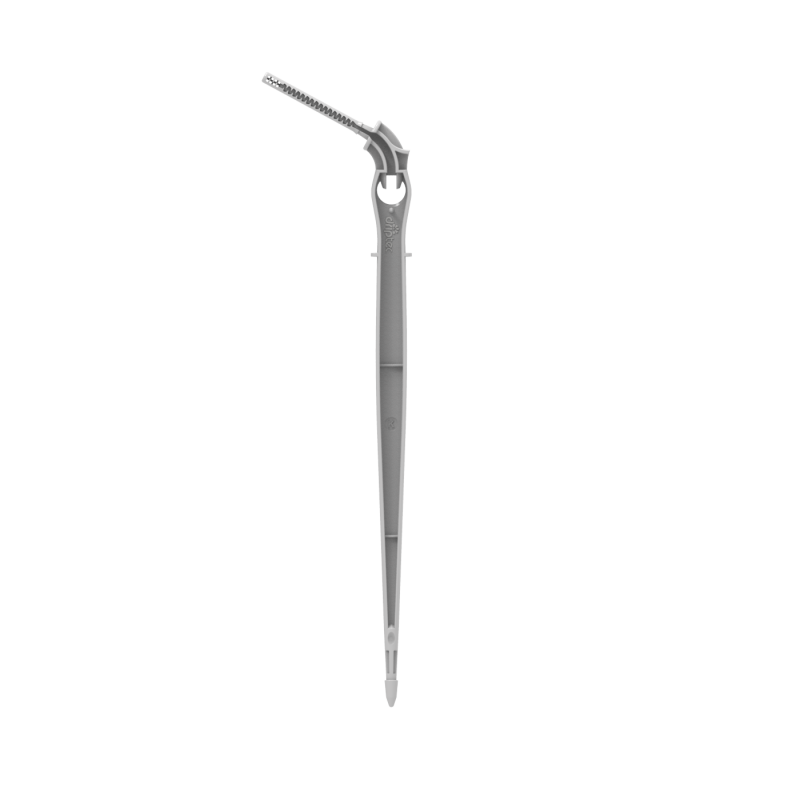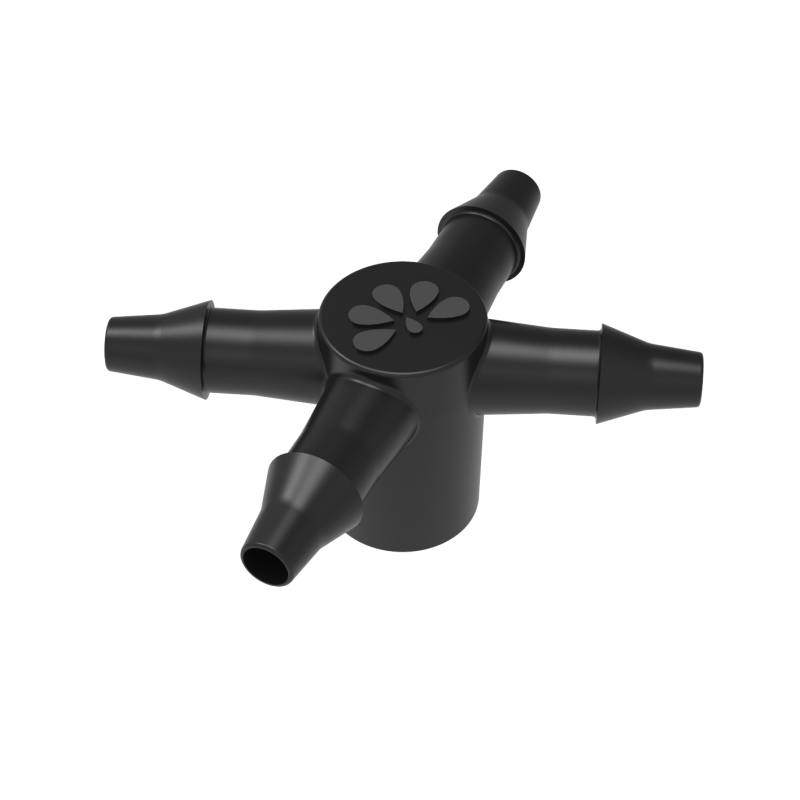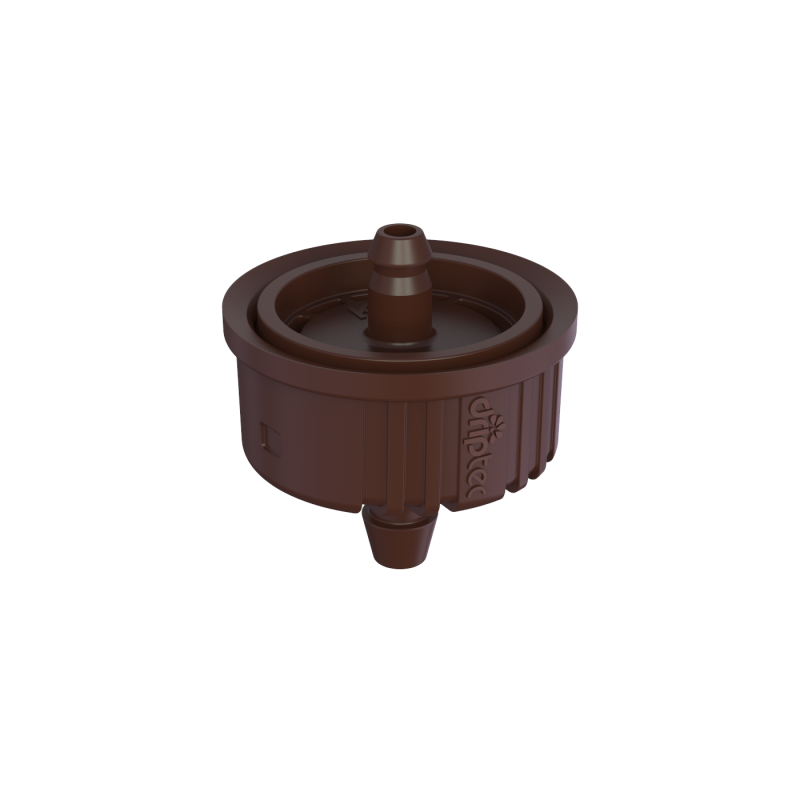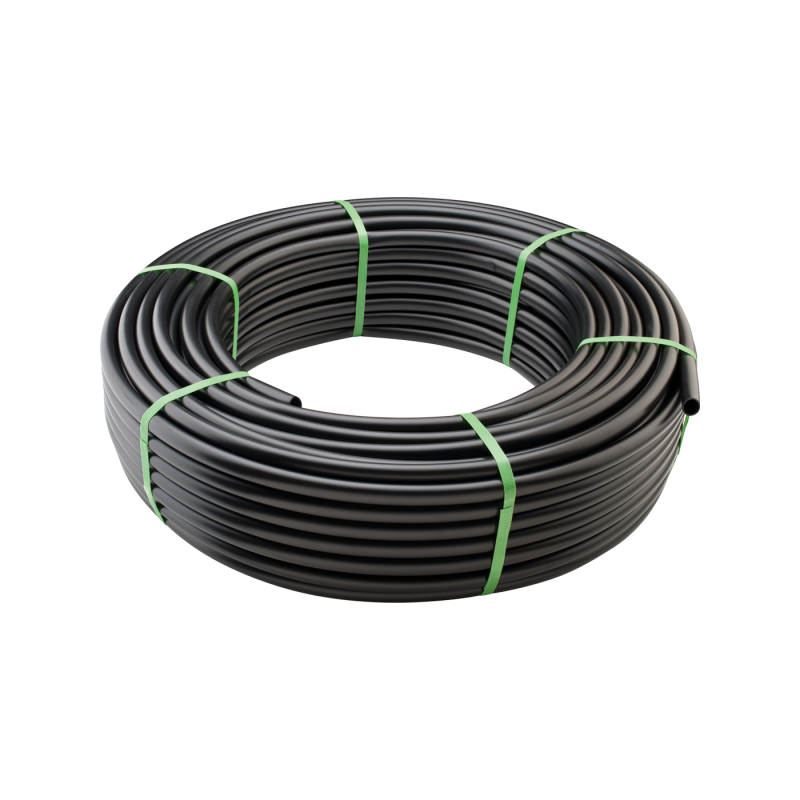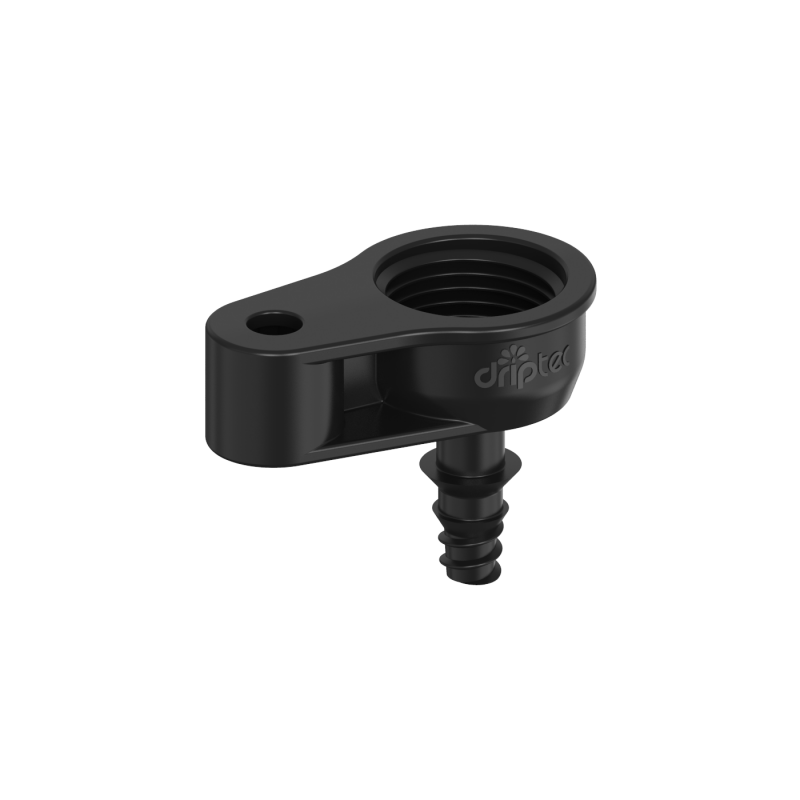AUTOMATIC CASSAVA IRRIGATION SOLUTION
The optimal irrigation water requirement for cassava is ~1000mm throughout the growth cycle, especially more in the first 3 months. A typical automatic cassava irrigation solution is drip irrigation, which can provide 10mm to 15mm of water per hour. (See also Calculating irrigation flow)
Evaluating irrigation water needs and determining an irrigation schedule for cassava according to the plant’s growth cycle is important and necessary for the growth of cassava. Irrigation is essential for cassava cultivation because it is used in places with irregular rainfall, during the dry season or during drought.
Depending on actual conditions, cassava can grow thanks to natural rainfall, through sprinkler irrigation systems, flood irrigation… but the most effective is drip irrigation. Drip irrigation provides the exact amount of water to the plant. Drip irrigation reduces evaporation loss and eliminates runoff with water efficiency of up to 90%, more efficient than other irrigation solutions.
Automatic cassava irrigation via drip systems has been proven to be a highly successful approach—optimizing water use, allowing fertigation, and increasing both yield and starch content. Drip irrigation applies water slowly and evenly with low pressure requirements, thereby also reducing energy consumption.
BENEFITS OF AUTOMATIC CASSAVA IRRIGATION
- This is an efficient irrigation method that can also be used for fertigation (applying fertilizer through the irrigation system). It helps reduce fertilizer costs by saving on both labor and the amount of fertilizer needed.
- Drip emitters deliver water directly to the root zone, minimizing the risk of leaf burn or excessive moisture—conditions that often promote the spread of diseases.
- The drip irrigation system is highly flexible and adaptable to all types of agricultural land, regardless of shape or size. It is also easy to expand and can be operated with low-power pumps.

